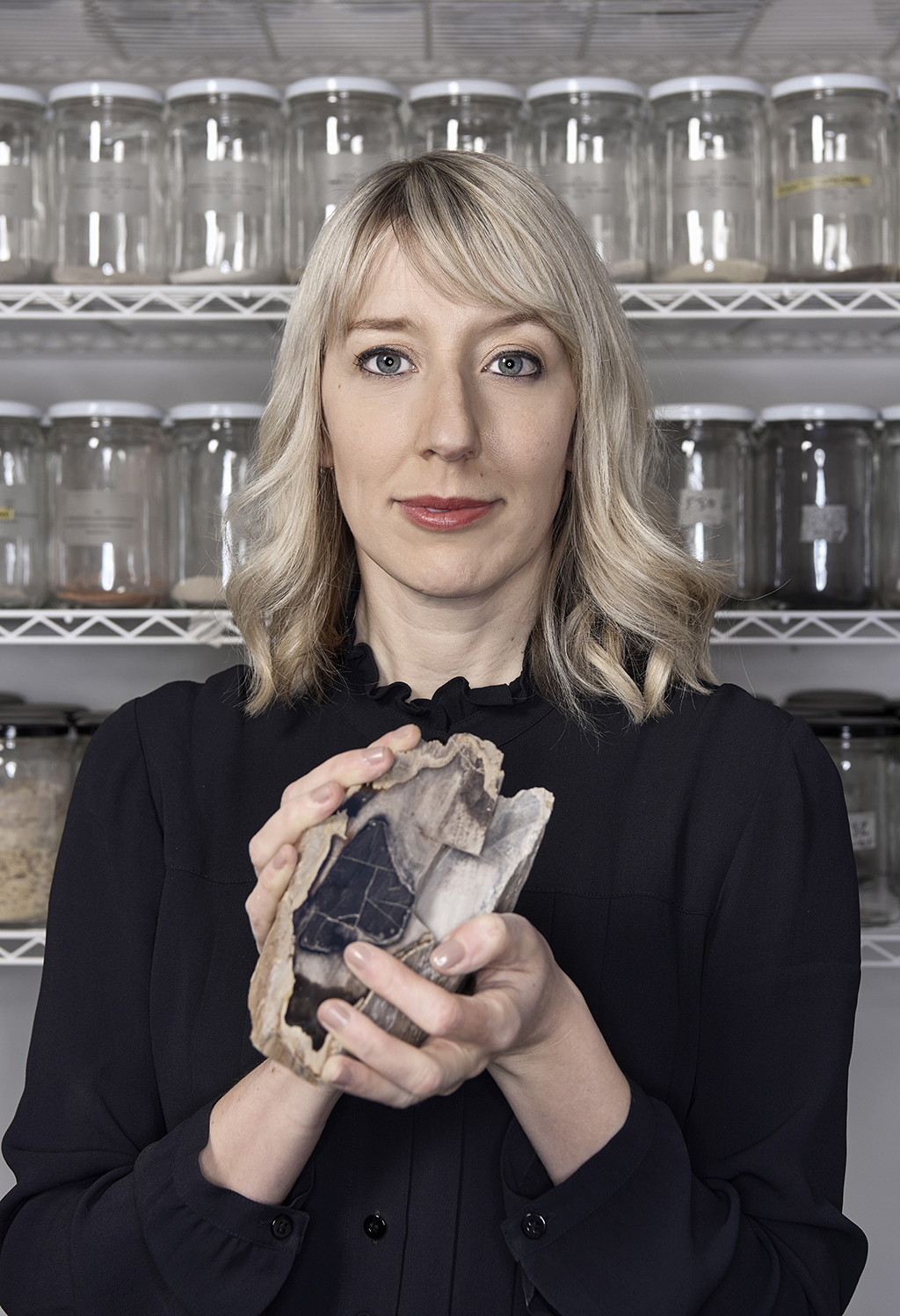A new exhibition by contemporary artist Katie Paterson that tells the birth and life of our planet in a single object is to go on display for the first time at Ingleby Gallery, Edinburgh, this spring.
Requiem tells the birth and life of our planet in a single object filled with layers of dust from pre-solar times to the present day.
Dust has been gathered from the objects of our most archaic ancestors, through to fossil fuel detritis, dead coral, war rubble and dust from the Atomic bomb; Berlin Wall, D day, Iraq…all products of the Anthropocene. The grim list of ingredients in these final layers echoes the environmentalist George Monbiot’s warning that ‘the crisis is not imminent; the crisis is here’.
Katie was born in Glasgow in 1981. She studied at Edinburgh College of Art and the Slade School of Art, London, and is widely regarded as one of the leading artists of her generation working at the nexus of art and science.
In the centre of the gallery (a simple, light-filled cube some eleven metres square) will stand a single plinth. On it, will sit a large jar, a glass urn, the ancient form of funerary vessel. Around the walls a long shelf will hold a series of small vials, 370 of them in all, each containing a tablespoon of dust, 21g of powdered matter – the posited weight of a human soul – each one a layer of time waiting to be poured, into the urn.
The dust has been obtained through collaboration with institutions and collections worldwide, including the European Space Agency, the Danish Geological Survey and the British Antarctic Survey. Collectively, the vials map the story of the earth from before its existence to the present day, and offer a lament for the planet, a warning, a requiem on the theme of extinction.
Katie said: ‘I’ve always made artworks that deal with nature and time and climate, but this is the first that isn’t afraid to be political and confrontational. It is both celebratory and mythical, and yet it is also the saddest work I’ve ever made, mourning life lost and expressing a dystopian vision.’

Katie Paterson
The pouring will begin with a layer pre-solar dust from the oldest of meteorites, carbonaceous chondrite, stretching back across the furthest distances of time and place, then the asteroid Vesta, a reminder of our planet’s origin still visible as the brightest asteroid in the night sky. There follows a slow unfurling of planetary history, from the oldest earthly rock formation of the 4.5-Billion-year-old Pre-Cambrian era to the first creatures to open their eyes, the first flowers to flower, the first skeletal structures and the slow emergence of humanity’s antecedents from ocean to land.
There are the crushed to dust remnants of our most archaic ancestors, from the earliest hunter-gatherers of Doggerland, through cultures and epochs long gone -Phoenician, Bactrian, Inca, Hellenistic, Roman, Pre-Columbian, Viking – each pouring of dust taking us layer by layer through the origins of everything, and the extinction of so much that is left in our wake.
And in condensing the birth and life of our planet into an artwork Katie has had to reckon with destruction of another kind, by her own hand, in crushing to dust the precious objects that were donated to the project by so many museums and collections. She has described it as intensely emotional experience – ‘It felt entirely wrong, and yet the cornerstone of the artwork is loss, and the small window of time in which we now find ourselves.’
That shrinking window of time steers the tone of the latter layers, as the Holocene gives way to the Anthropocene in which human beings have themselves become a significant geological force: Trinitite from the first Atomic Bomb detonation; dead coral from our dying seas; fly ash from the burning of fossil fuels; the highly hazardous pesticides found in cereal crops and in most of our bodies; the first chemically synthesised genome; rubble from the ruins of war-torn Iraq; regurgitated plastic from the body of a baby albatross and a polystyrene cup from the bottom of the deepest ocean on earth.
The grim list of ingredients in these final layers echoes the environmentalist George Monbiot’s warning that “the crisis is not imminent; the crisis is here”. Paterson’s work asks us to wake up to the reality of what this crisis of extinction means, and to reflect on the enormity of our planetary experience reduced to 370 layers of dust.
A publication devoted to this extraordinary engagement with deep time and the history of the planet will be published in the summer of 2022, with an individual commentary on every layer by Jan Zalasiewicz (chair of the Anthropocene Working Group) and essays by David Farrier (author of Footprints – in Search of Future Fossils and Anthropocene Poetics) and Jay Griffiths (author of Wild, An Elemental Journey).
Katie Paterson’s exhibition opens at Ingleby Gallery, Edinburgh on 9 April and the vials of dust will be poured, layer by layer, by invited guests and members of the public during the opening hours of the gallery, until the close of the show on 11 June. The Urn then travels to the Chapter House of Durham Cathedral, a tour instigated by the National Glass Centre, Sunderland. The glass urn that contains the dust, and the 370 hand-made vials, have been made by the glass-blowing team of the National Glass Centre with support from the Arts Council of England.
This exhibition in the UK coincides with a major institutional presentation of work by Katie Paterson in Galleri F15 in Moss, Norway in Spring 2022, the 2022 Future Library handover, in Oslo, Norway in June 2022, and the inauguration of Mirage, the first public sculpture to be commissioned by Apple for their HQ in California.
TAGS

